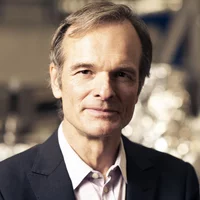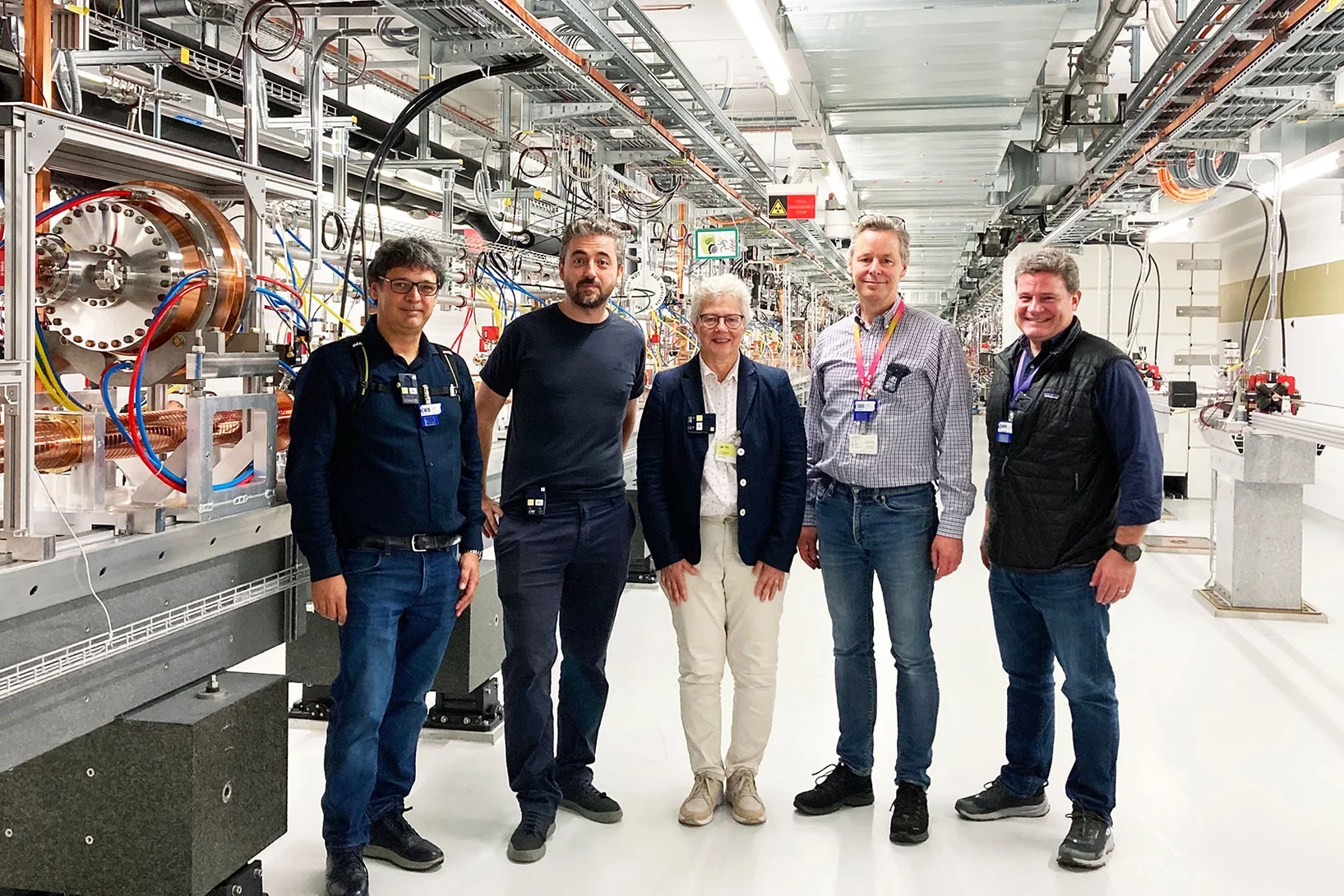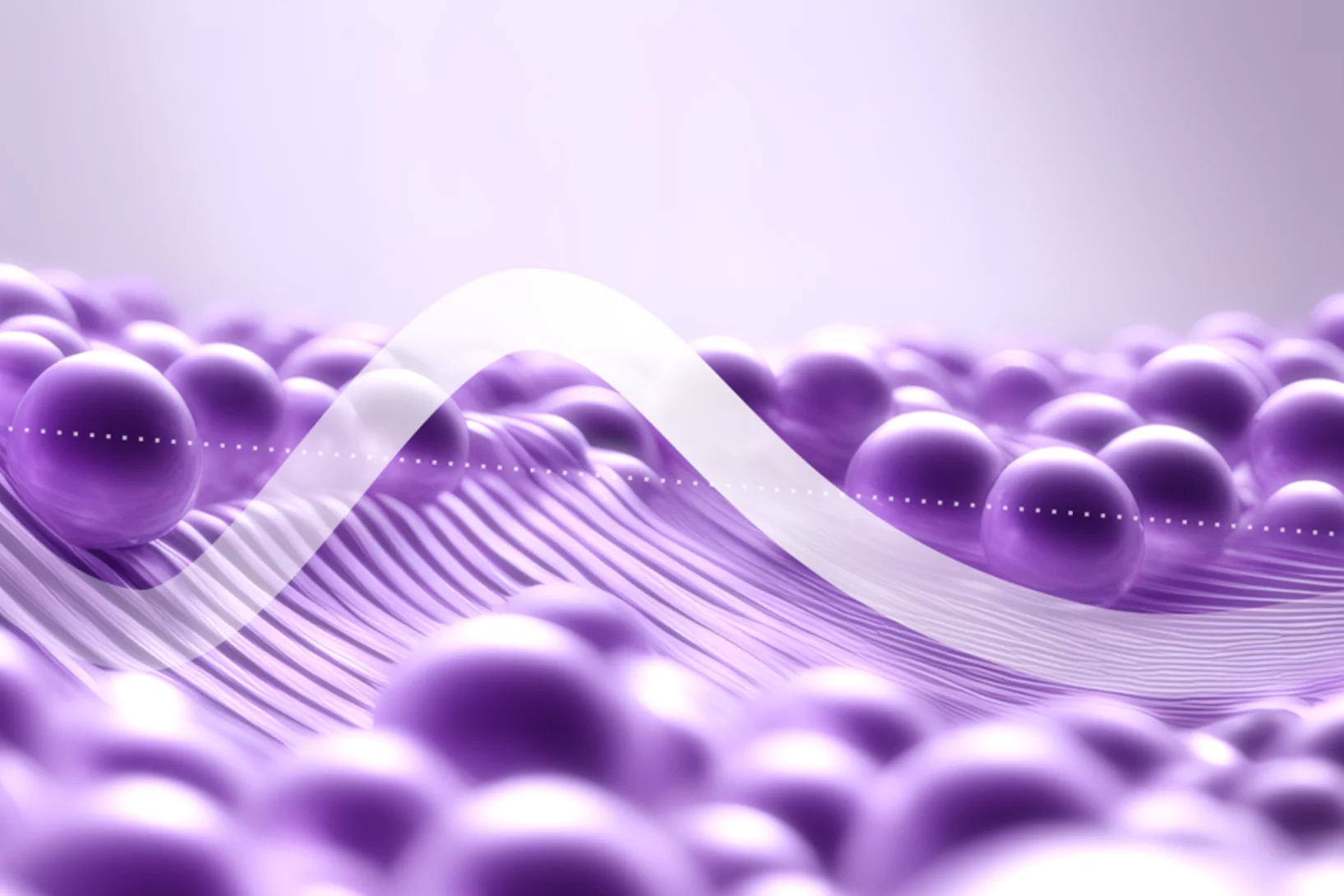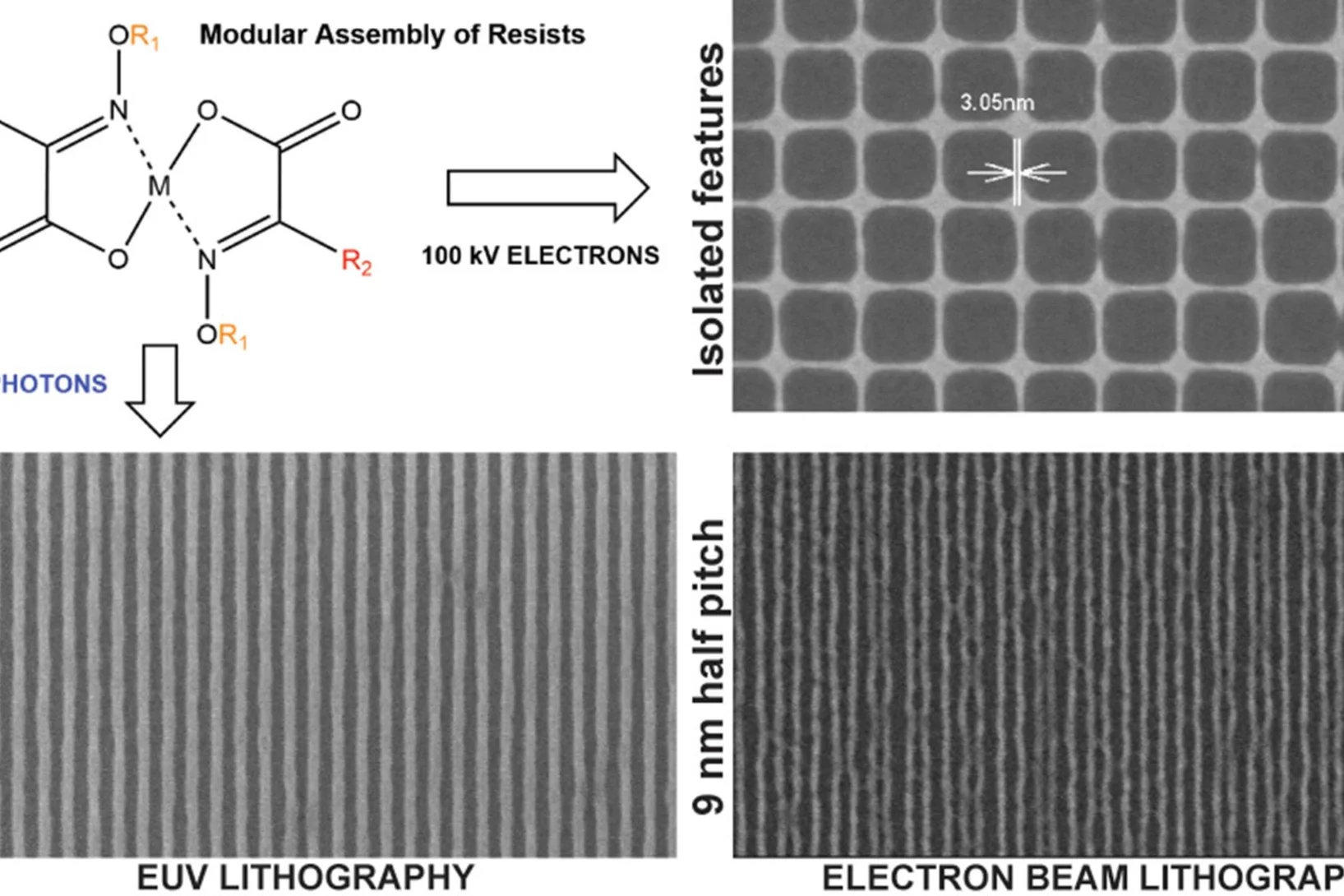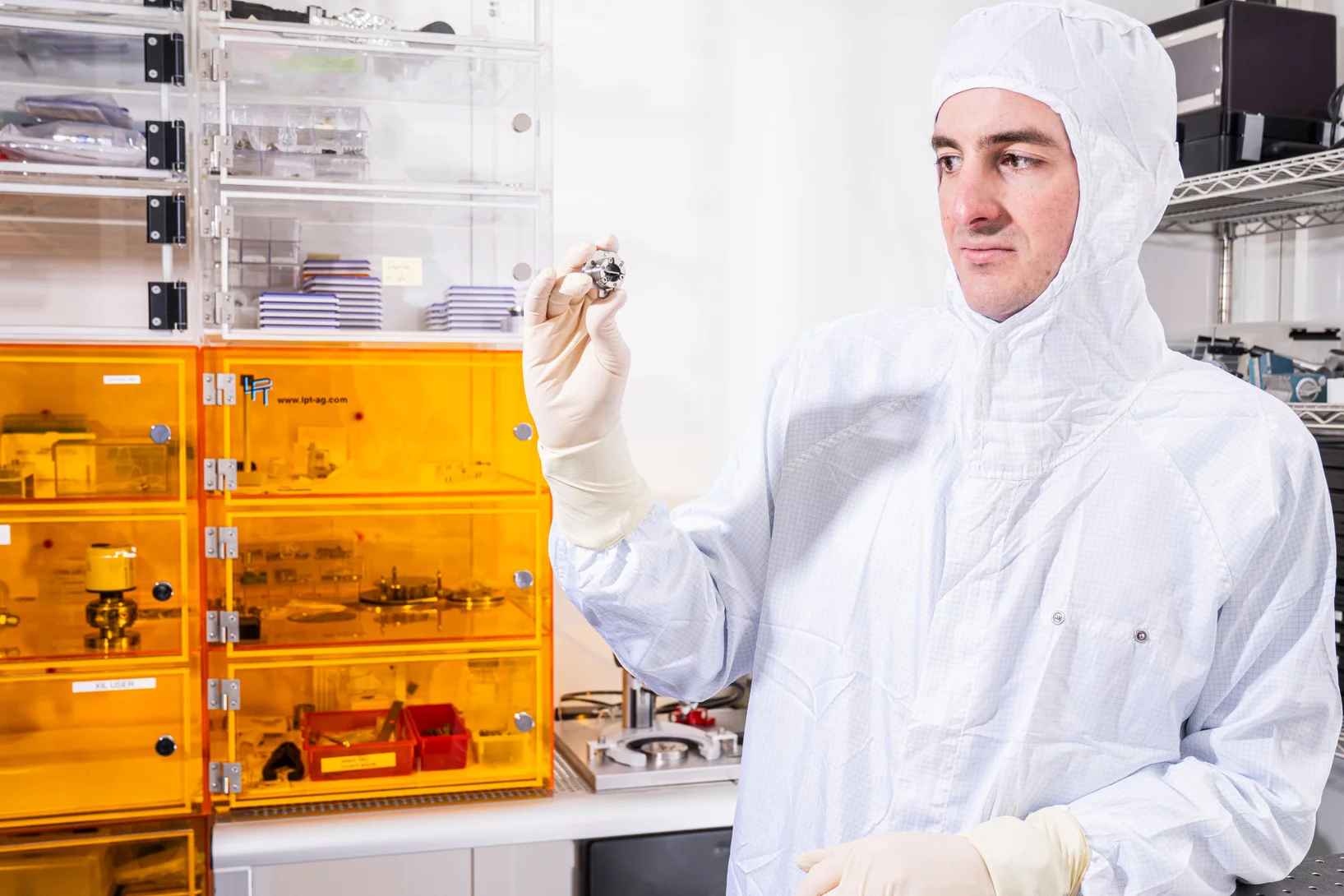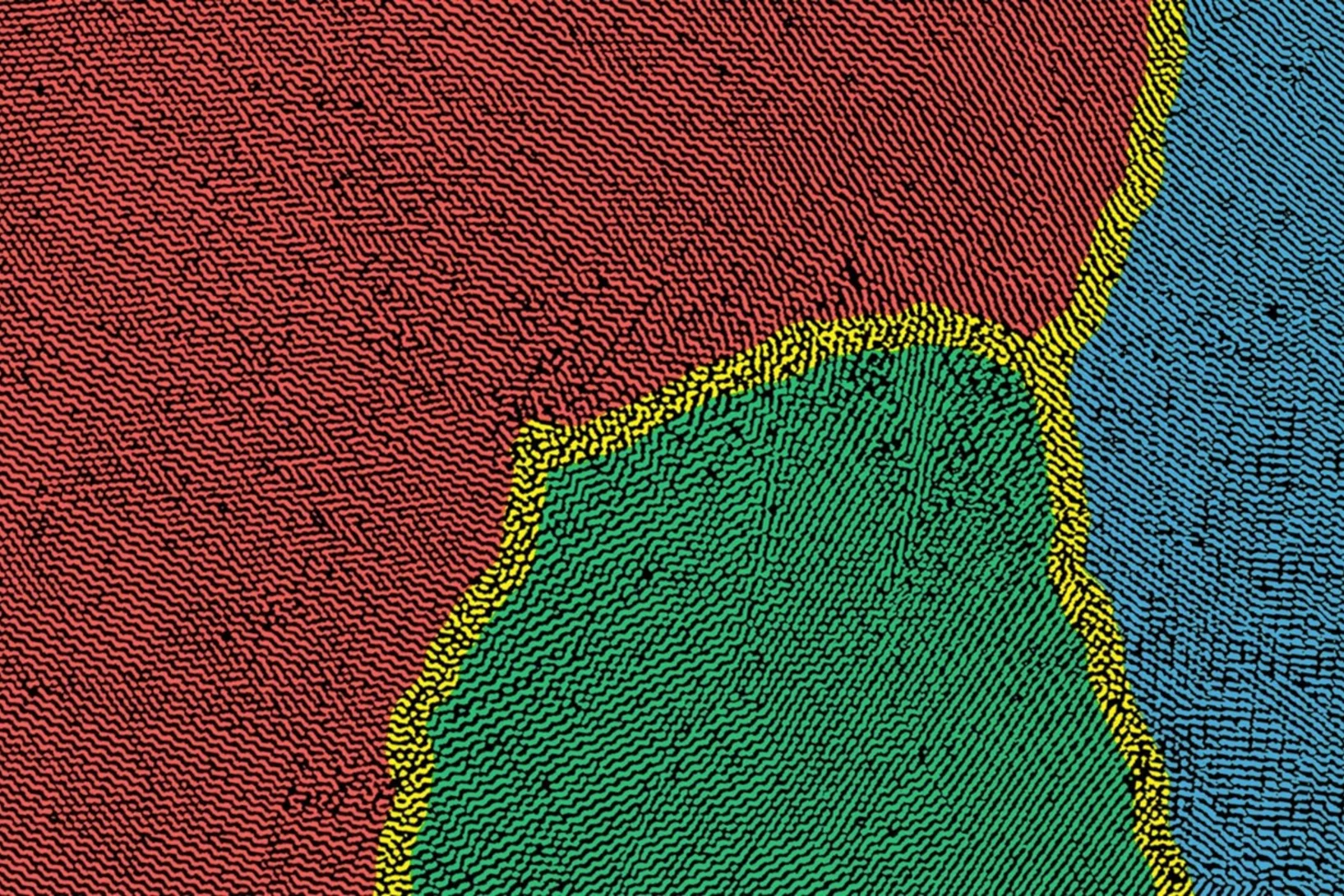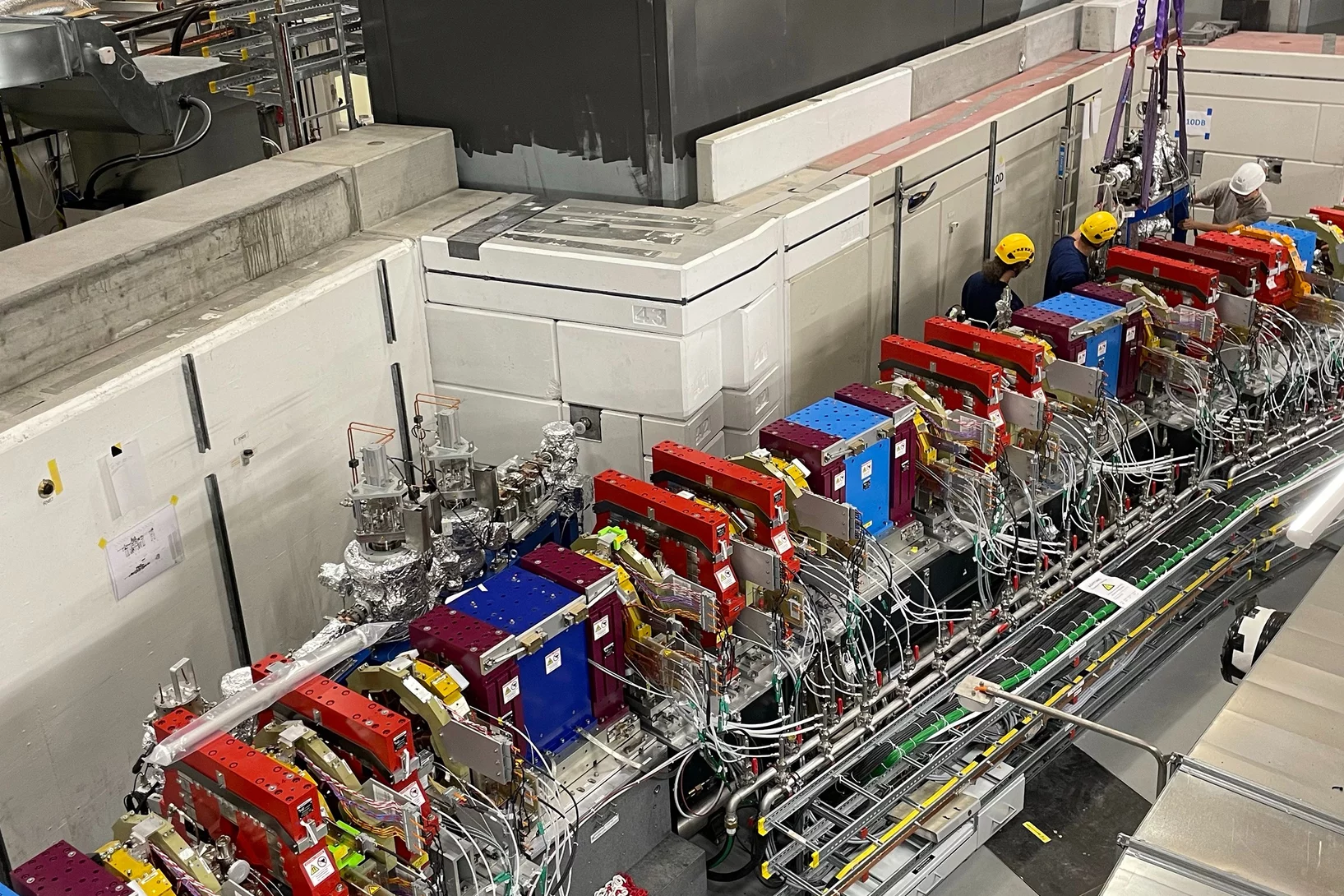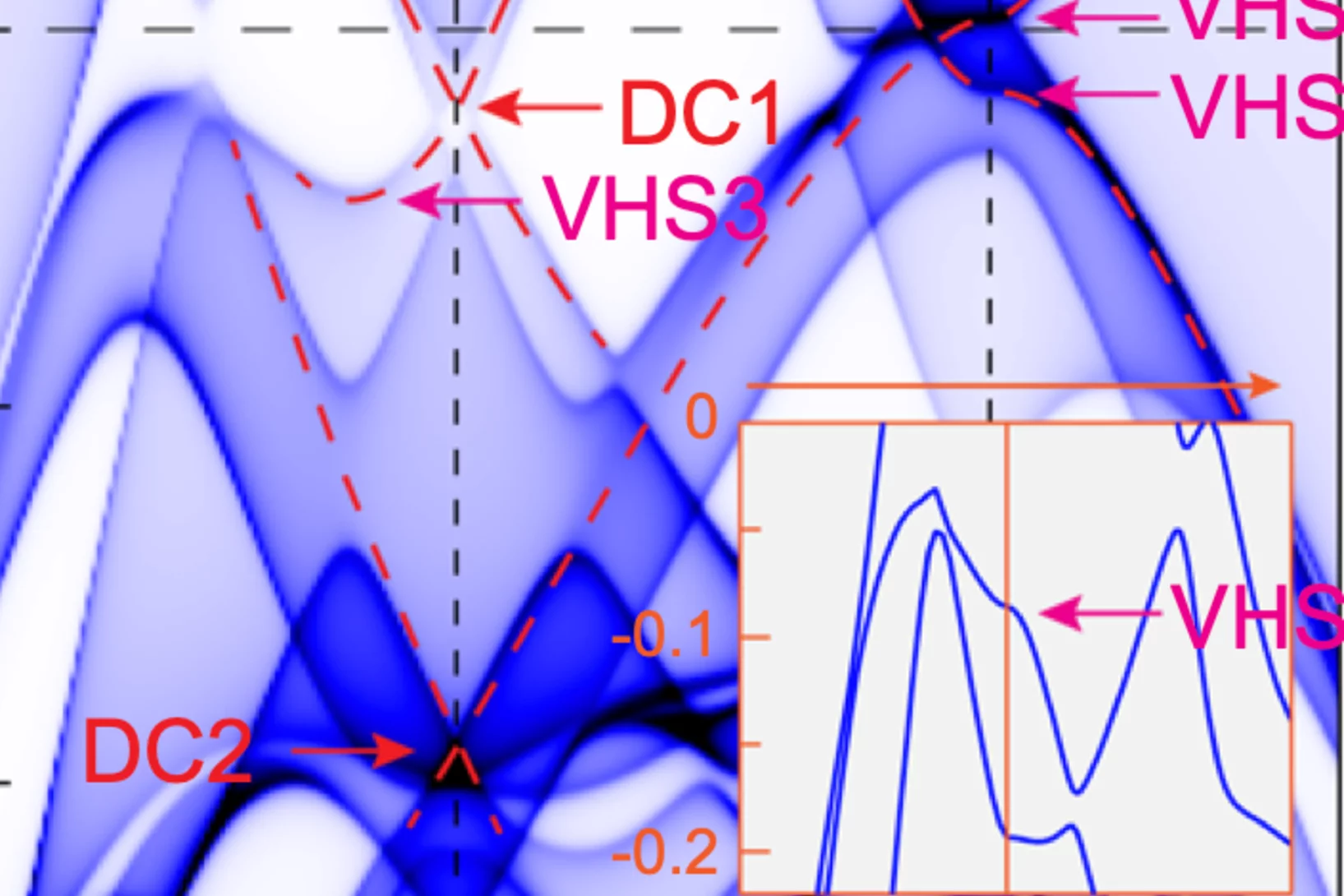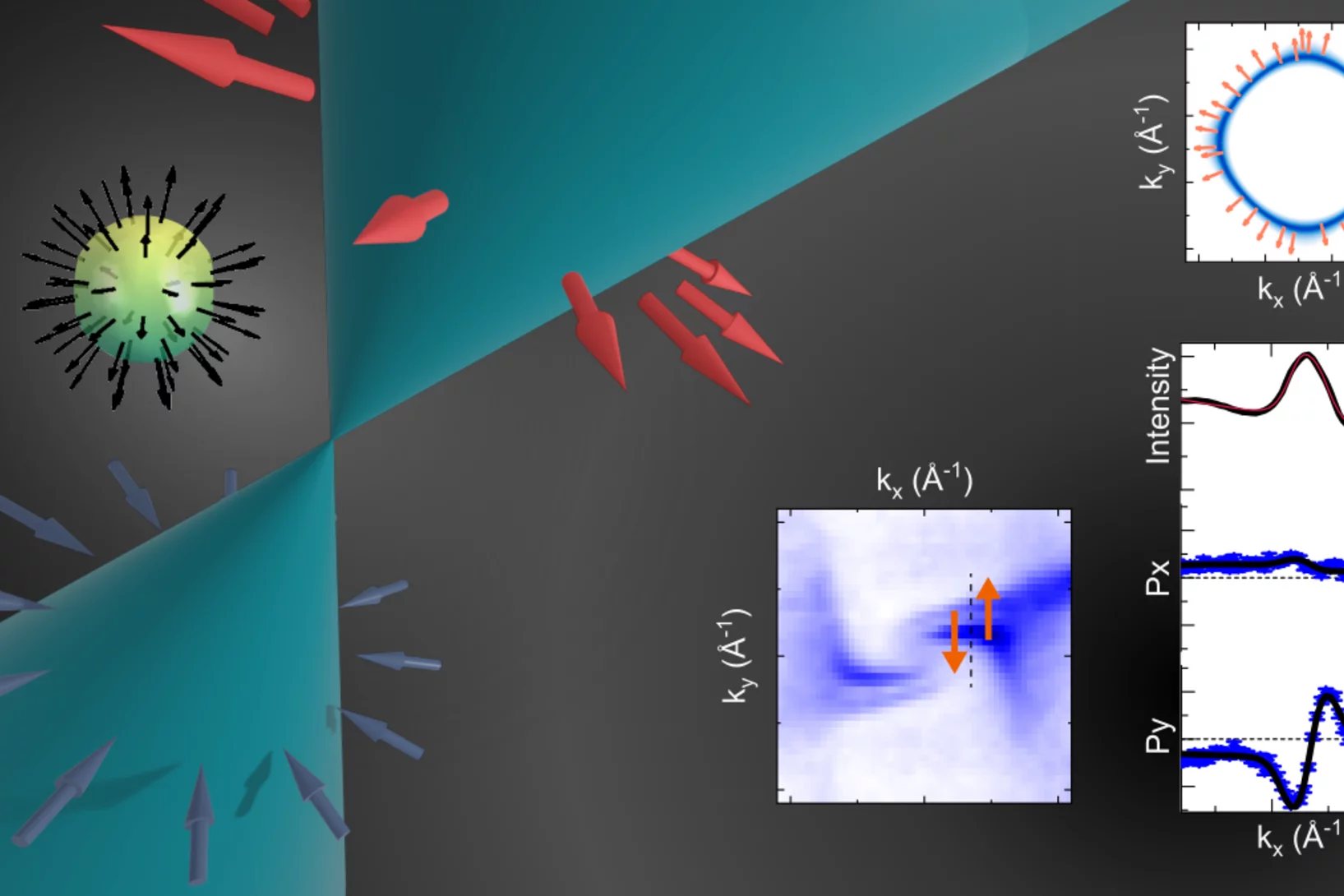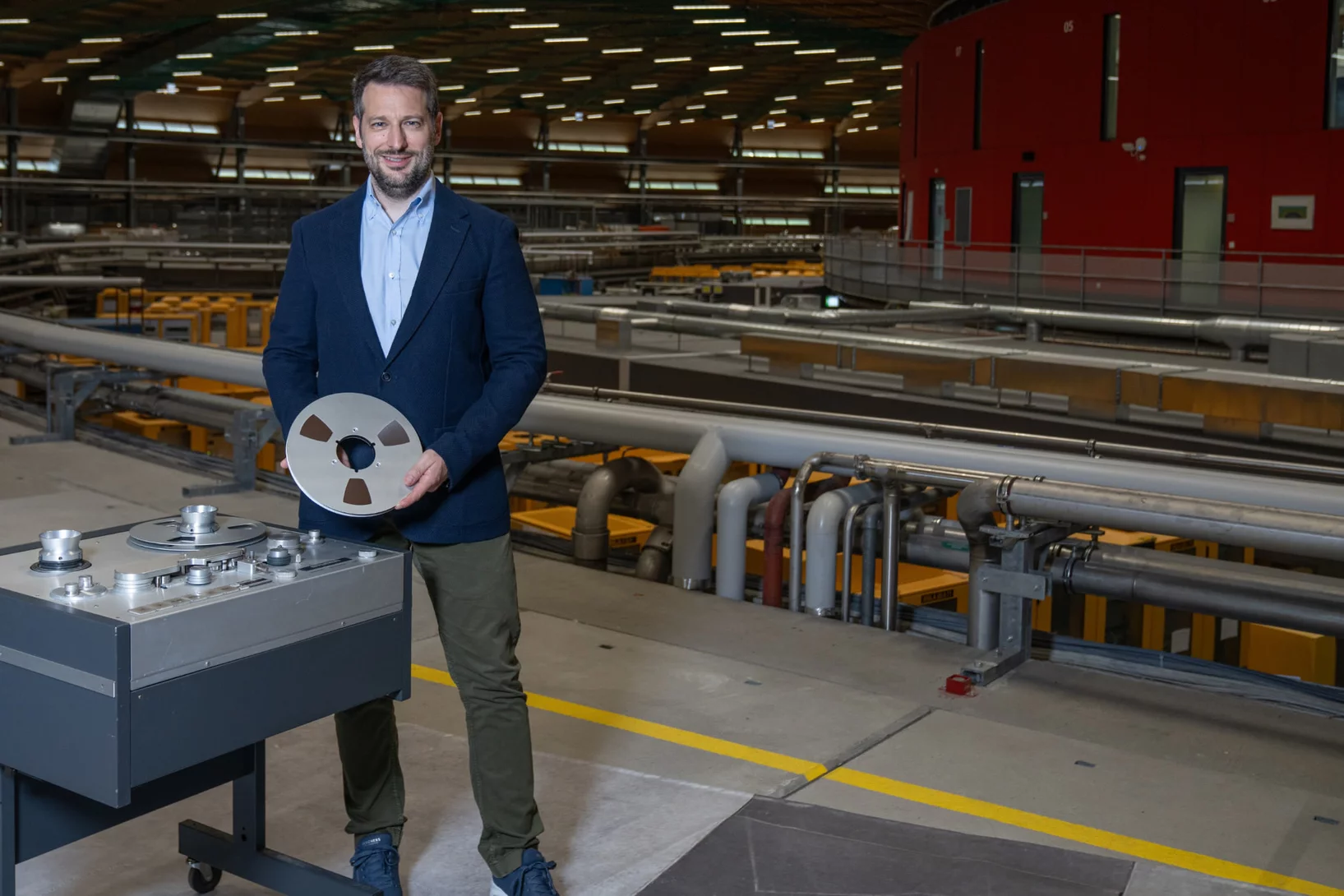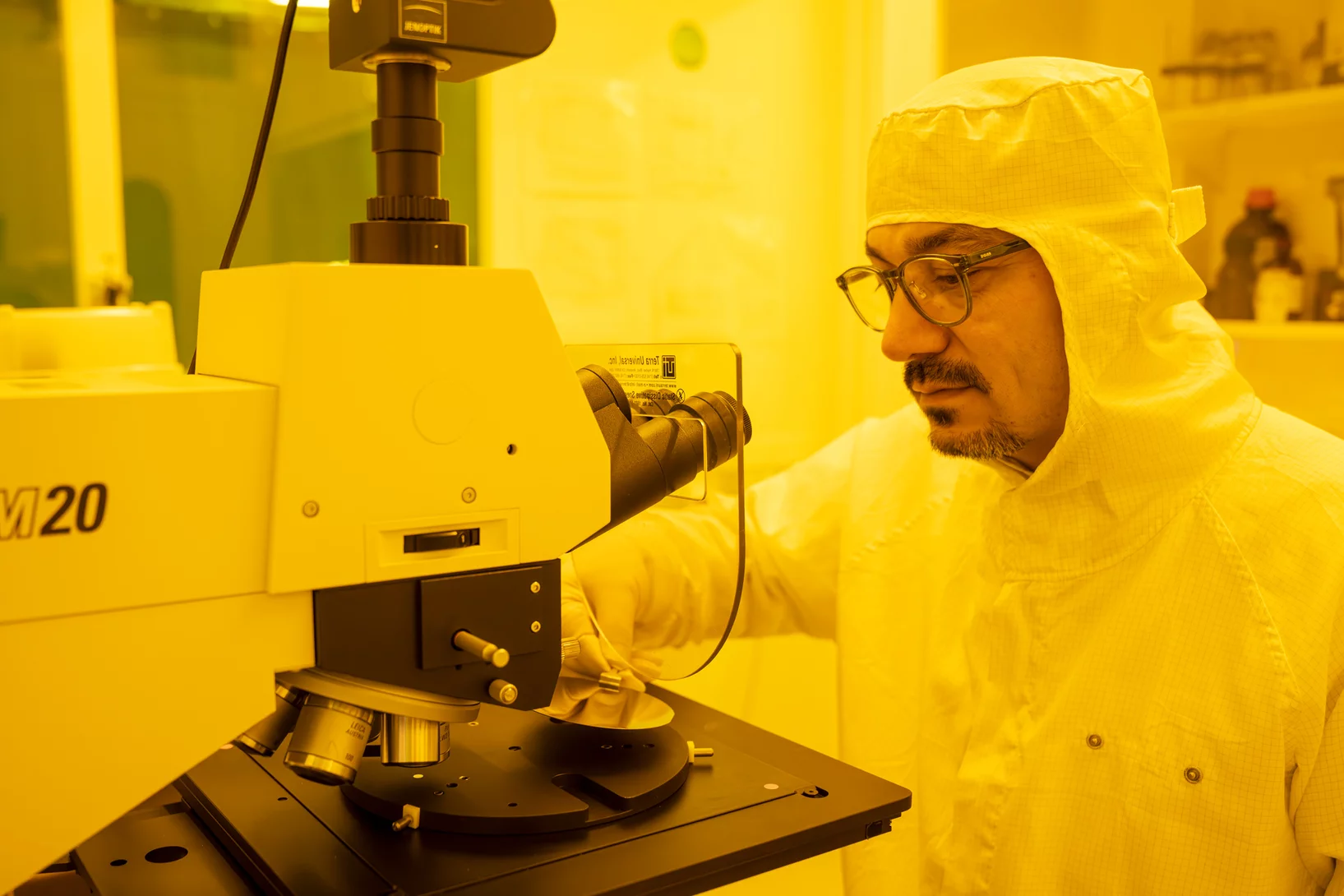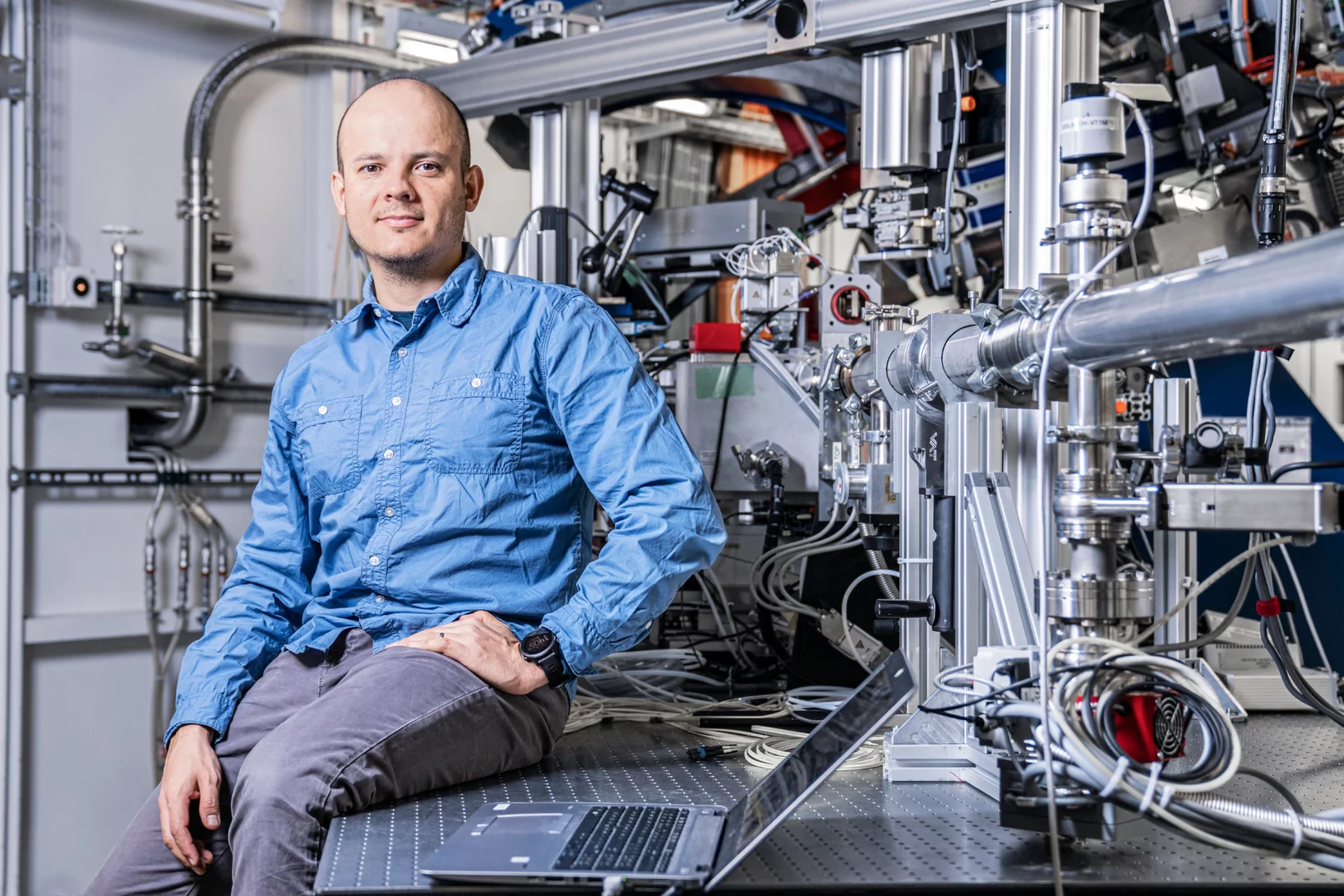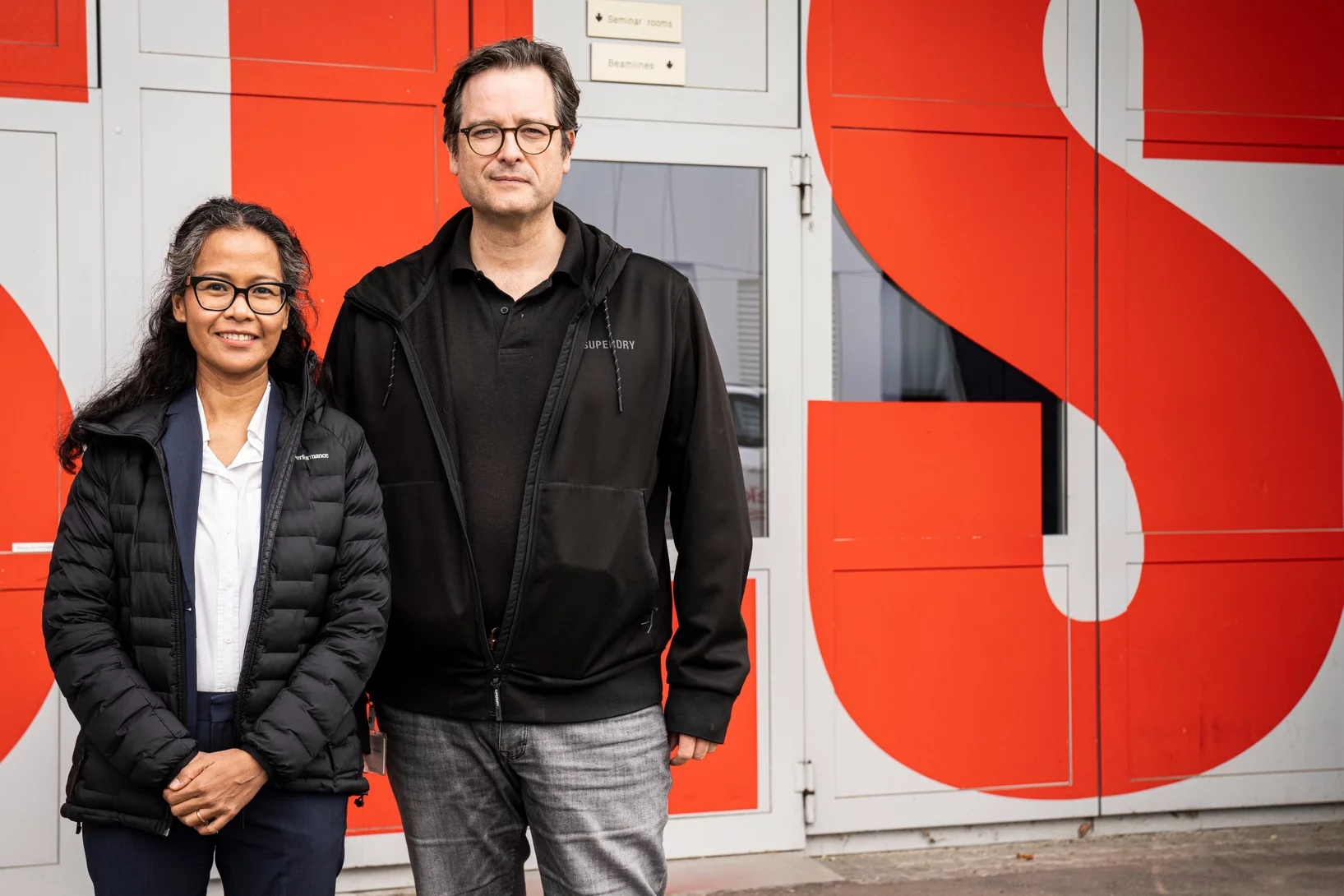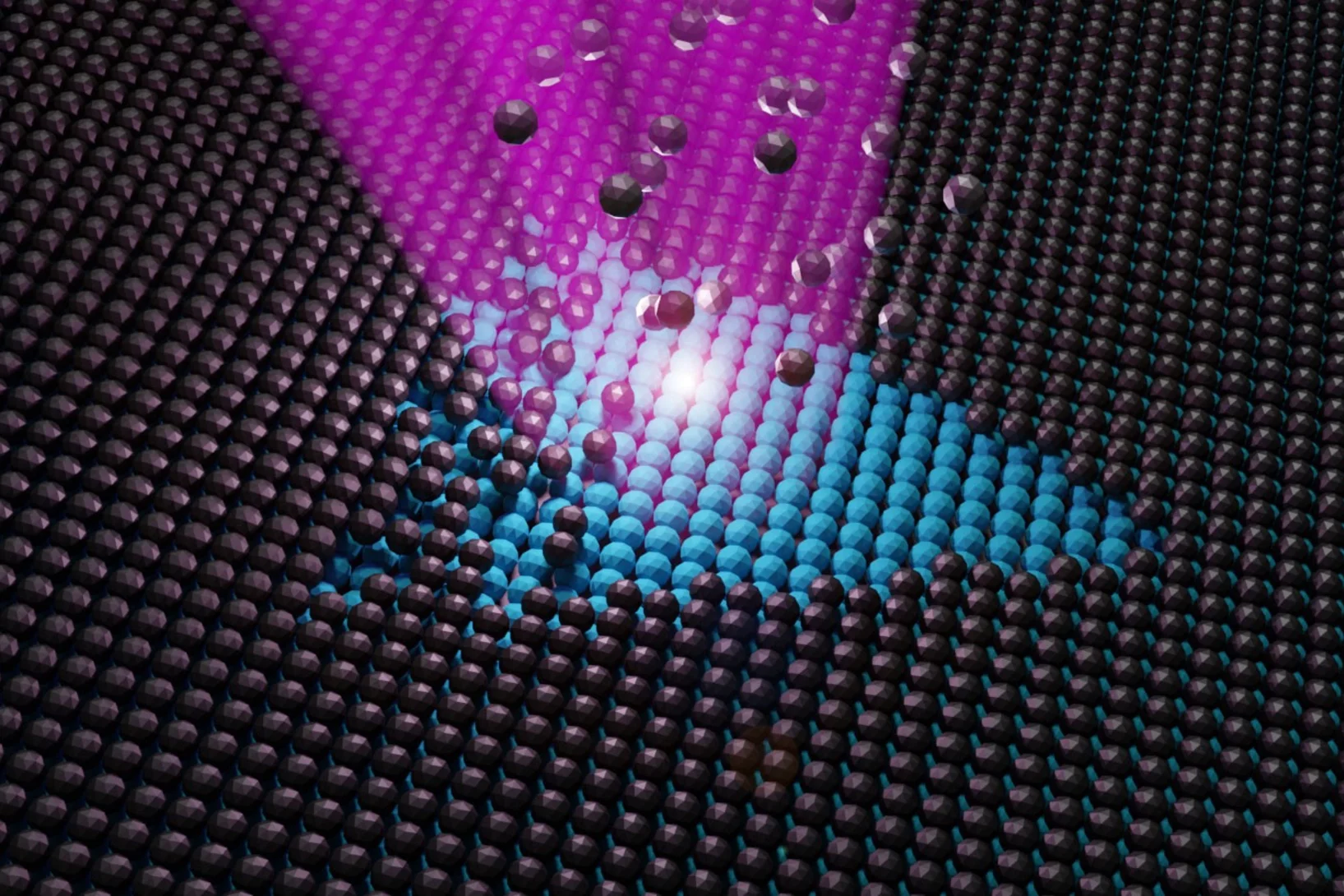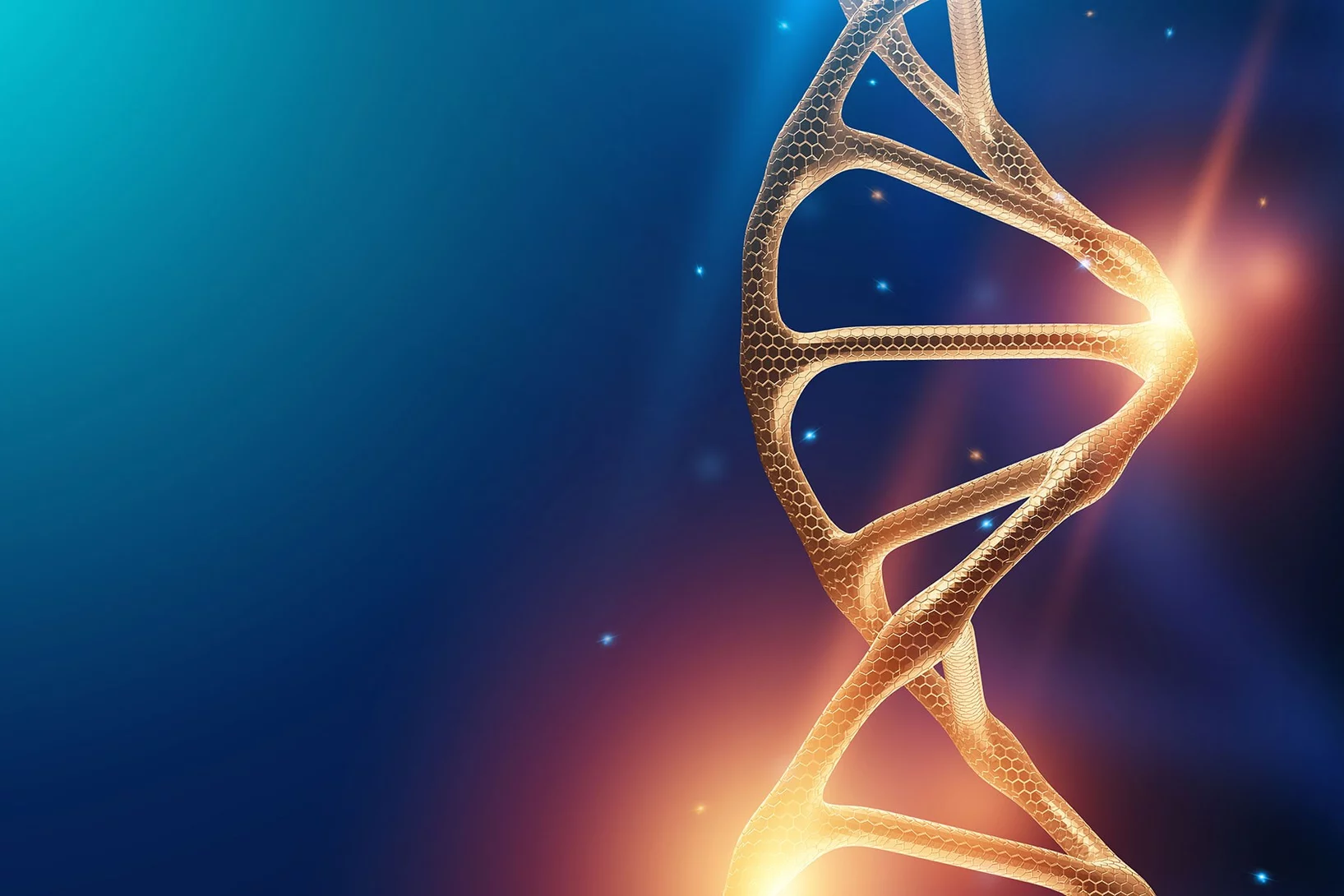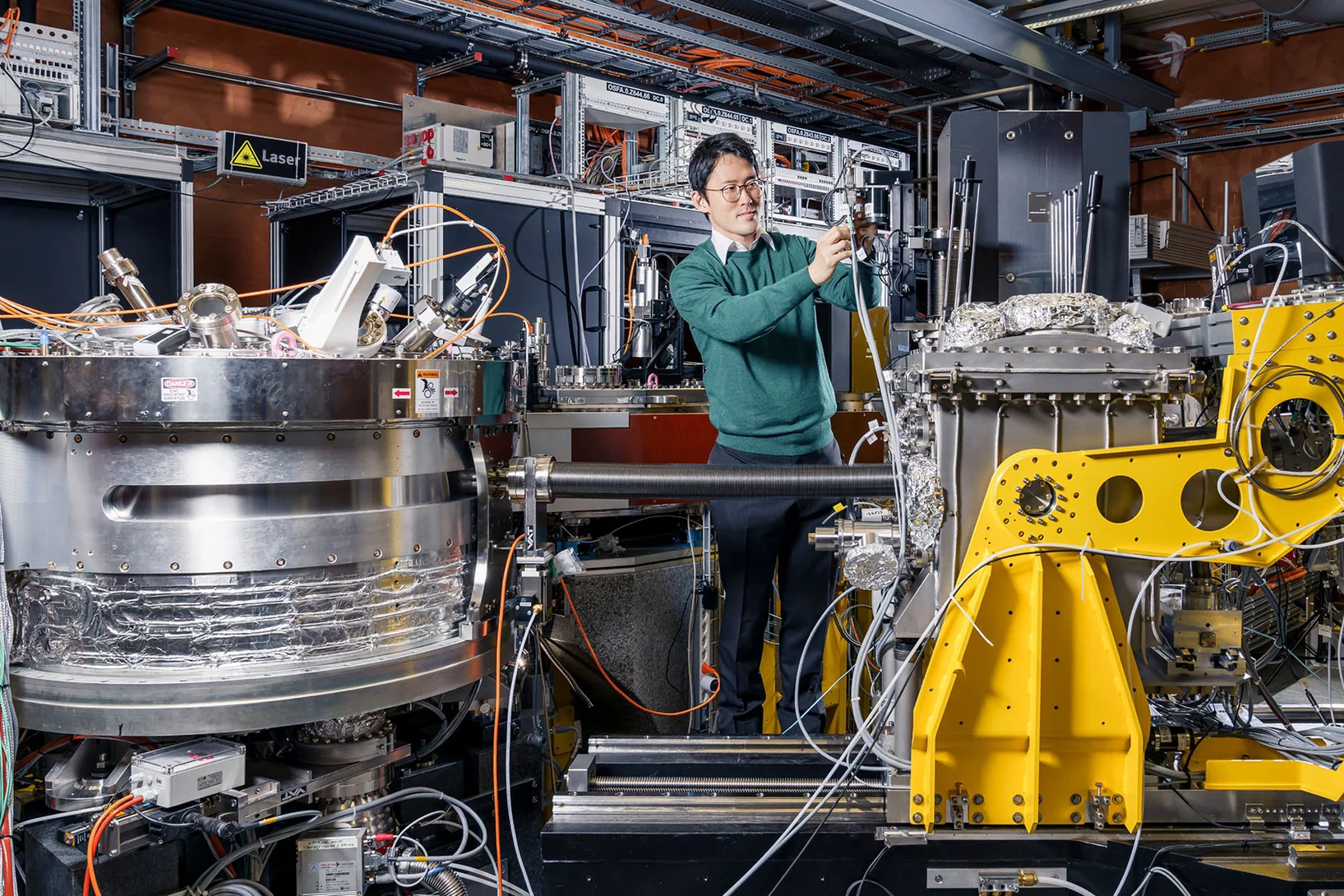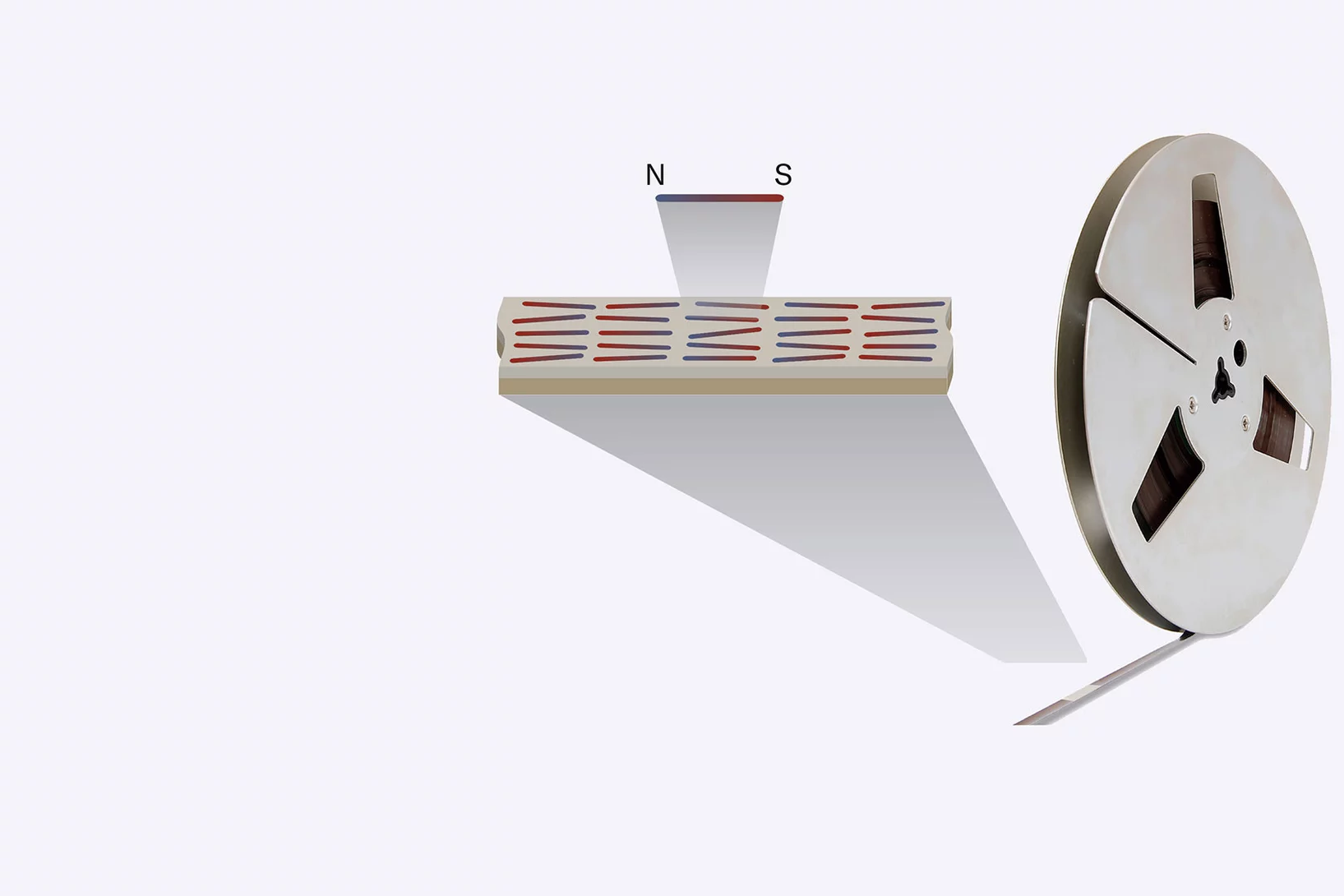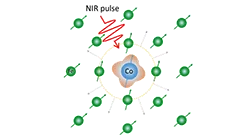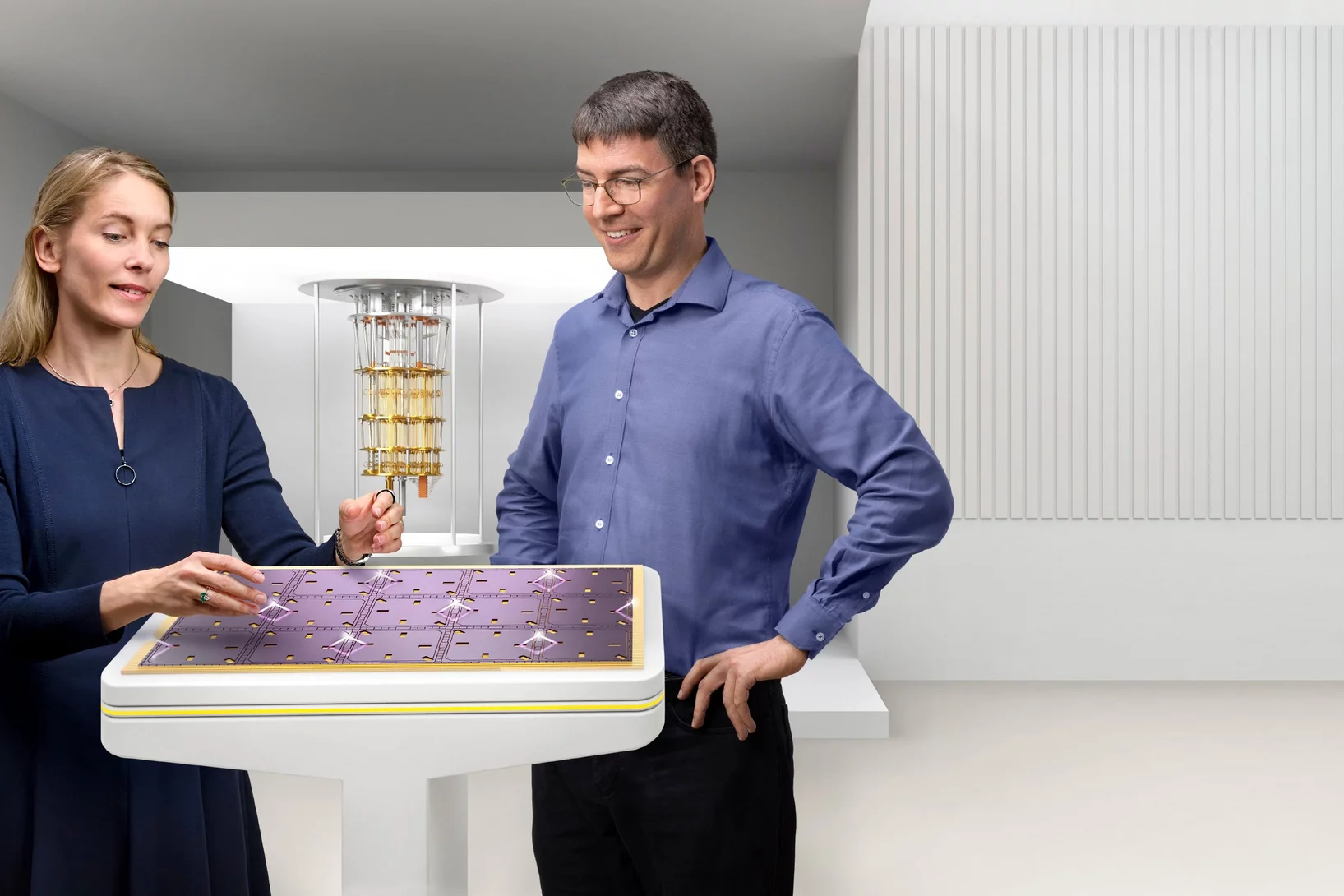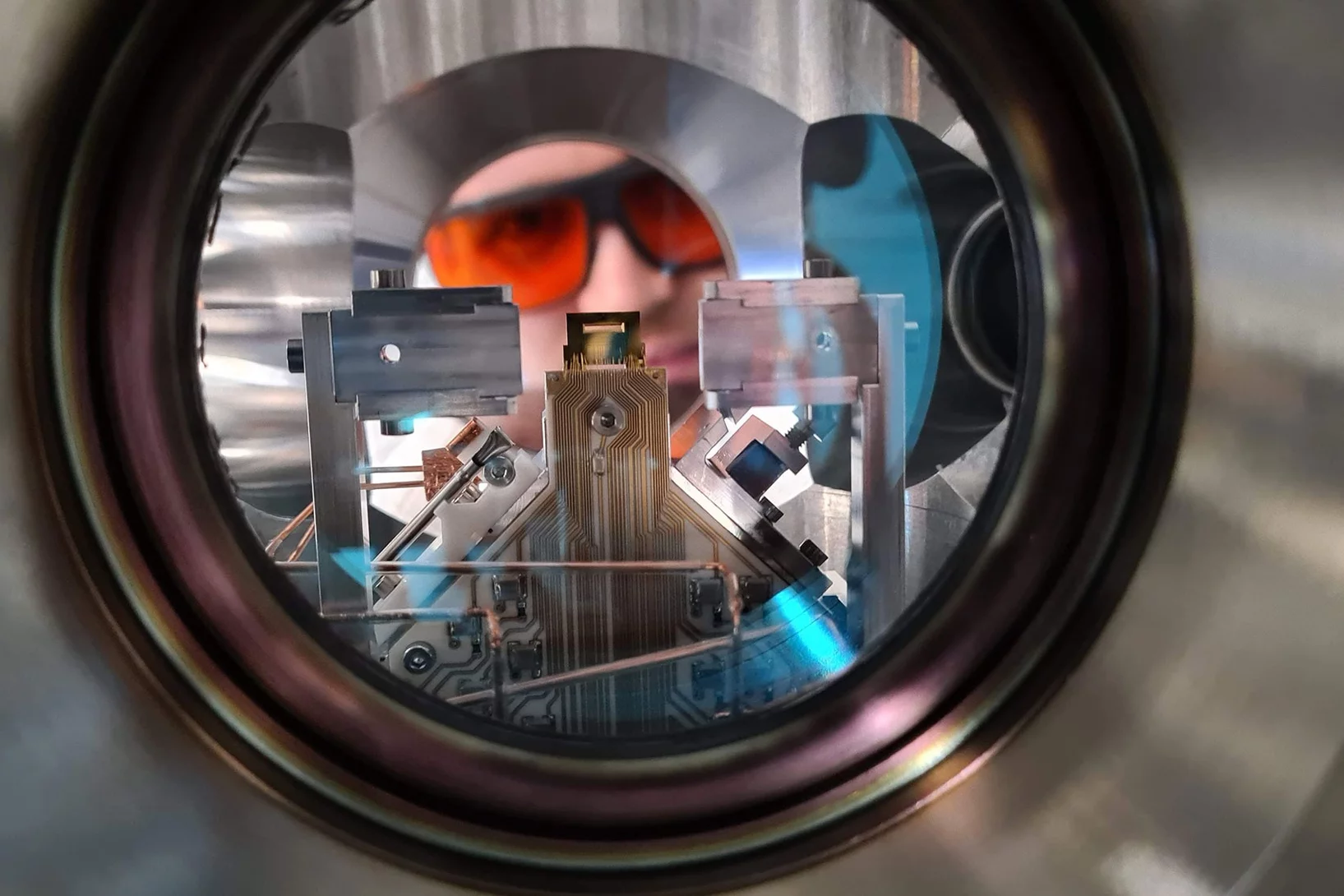SLS 2.0: Wie man einen Teilchenbeschleuniger startet
Die Elektronen sind zurück: Die Synchrotron Lichtquelle Schweiz SLS geht nach ihrem Upgrade schrittweise wieder an den Start.
Prestigeträchtige Förderung für Forschung am PSI
Beton, chemische Katalyse und die Suche nach neuer Physik – für diese Forschungsthemen erhalten drei PSI-Forschende je einen Grant des Schweizerischen Nationalfonds.
A new dimension of complexity for layered magnetic materials
X-rays reveal magnetic phenomena driven by interactions between the layers of a kagome ferromagnet
Einzigartiger Quantensimulator öffnet Tür zu neuer Forschung
Physiker des PSI und Google haben einen neuartigen digital-analogen Quantensimulator gebaut.
Mapping the Nanoscale Architecture of Functional Materials
A new X-ray technique reveals the 3D orientation of ordered material structures at the nanoscale, allowing new insights into material functionality.
Die Rätsel der Proteine entschlüsseln
Der diesjährige Nobelpreis für Chemie geht an drei Forscher, die entscheidend dazu beigetragen haben, den Code der Proteine – wichtige Bausteine des Lebens – zu knacken. Doch damit aus diesem Wissen auch Anwendungen zum Beispiel in der Medizin entwickelt werden können, braucht es Forschungsinstitute wie das PSI.
Magnetismus in dünnen Schichten: Ein Elektron macht den Unterschied
Ein wichtiger Schritt zu neuartigen Computerspeichern
Orbitronics: new material property advances energy-efficient tech
Discovery of orbital angular momentum monopoles boosts the emerging field of orbitronics, an energy-efficient alternative to electronics.
Nobel Prize winner Anne L’Huillier visits SwissFEL
X-ray free-electron lasers could unlock the next frontier in attosecond research
Controlling magnetic waves in a spin liquid
Scientists at the Paul Scherrer Institute PSI have shown that excitation of a spin liquid with intense THz pulses causes spins to appear and align within less than a picosecond. This induced coherent state causes a magnetic field to form inside the material, which is detected using ultrashort X-ray pulses at the X-ray Free Electron Laser SwissFEL.
Novel Photoresist Chemistry Enables Lithography Approaching Angstrom-Scale Resolution
Photoresist materials are crucial in the manufacturing of computer chips, where the circuits are initially printed in the photoresist using photolithography. As the demand for smaller and more precise circuitry in computer chips grows, photoresists must resolve features with smaller sizes and higher density. One of the factors determining the ultimate resolution in lithography is the molecular size/mass of the photoresists.
Forschende zeigen, dass Computerchips noch kleiner werden könnten
Forscher am PSI erreichen mit EUV-Lithografie eine noch nie dagewesene Auflösung von 5 Nanometern (half pitch).
Neuer Röntgenweltrekord: Blick in einen Computerchip auf 4 Nanometer genau
Mit einer Rekordauflösung von 4 Nanometern gelang es Forschenden am PSI, die räumliche Struktur eines Computerchips mithilfe von Röntgenlicht abzubilden.
Nanoimaging Reveals Topological Textures in Nanoscale Crystalline Networks
X-ray nano-tomography reveals collective behavior in synthetic self-assembled nanostructures. The new method opens opportunities for the synthesis of photonic and plasmonic materials with improved long-range ordering.
Installation of the first two front ends for the SLS2.0 completed
At the Swiss Light Source SLS of the Paul Scherrer Institute, another important step has been taken towards the completion of the SLS 2.0 upgrade project.
Phonon promoted charge density wave in topological kagome metal ScV6Sn6
Charge density wave (CDW) orders in vanadium-based kagome metals have recently received tremendous attention, yet their origin remains a topic of debate. The discovery of ScV6Sn6, a bilayer kagome metal featuring an intriguing √3 × √3 × √3 CDW order, offers a novel platform to explore the underlying mechanism behind the unconventional CDW. Here we combine ...
Weyl spin-momentum locking in a chiral topological semimetal
Spin–orbit coupling in noncentrosymmetric crystals leads to spin–momentum locking – a directional relationship between an electron’s spin angular momentum and its linear momentum. Isotropic orthogonal Rashba spin–momentum locking has been studied for decades, while its counterpart, isotropic parallel Weyl spin–momentum locking has remained elusive in experiments. Theory predicts ...
Grundlegend anders
Künstliche Intelligenz hilft dabei, unvorstellbar grosse Datenmengen effizient auszuwerten und das volle Potenzial der Grossforschungsanlagen auszuschöpfen.
Musik mit Röntgenlicht retten
Die SLS spielt den «King of the Blues» – B.B. King! In Zusammenarbeit mit dem «Montreux Jazz Digital Project» werden am PSI historische Tonbänder digitalisiert.
Neues Verfahren zur Herstellung von Halbleitern
Das Paul Scherrer Institut PSI arbeitet mit dem finnischen Unternehmen PiBond an der kommerziellen Nutzung hoch entwickelter Halbleiterprodukte, die mittels EUV-Lithografie hergestellt wurden.
What will the SLS 2.0 upgrade mean for experiments?
Tighter beams, brighter light and extended photon energies open new experimental possibilities.
Leistungsfähige Lithium-Luft-Batterien alltagstauglich machen
Mit Neutronenstrahlen und Synchrotronlicht die chemischen Prozesse in Lithium-Luft-Batterien enthüllt.
Ursache für verstopfte Spritzennadeln gefunden
Forschende des PSI und des Technologietransferzentrums ANAXAM finden die Ursache für Verstopfungen bei vorgefüllten Fertigspritzen.
Extreme ultraviolet for scalable silicon quantum devices
Experiments at the Swiss Light Source (SLS) show the potential of extreme ultraviolet light (EUV) to make the building blocks of scalable quantum computers.
Erbschäden mit Sonnenlicht reparieren
Ein internationales Forschungsteam hat am SwissFEL des PSI aufgeklärt, wie ein Enzym mithilfe von Sonnenlicht DNA-Schäden repariert.
The secret life of an electromagnon
SwissFEL sheds light on how lattice and atomic spins jiggle together.
Intelligentes Glas und Musik aus der SLS
Jährlich fördert das PSI-Founder-Fellowship-Programm neue Ideen für innovative Anwendungen mit bis zu 150 000 Schweizer Franken.
Mechanism For All-Optical Magnetization Switching
X-rays reveal a non-collinear magnetic state as the base for all-optical magnetization switching.
Zwei Projekte zur Verknüpfung fehlerkorrigierter Qubits lanciert
Die amerikanische Forschungsförderungsagentur IARPA finanziert zwei Quantum-Computing-Projekte, an denen Forschende der ETH Zürich und des PSI beteiligt sind.
Quantencomputer bereits heute nutzen
Analoge Quantencomputer ermöglichen die Beobachtung ultraschneller chemischer Reaktionen
